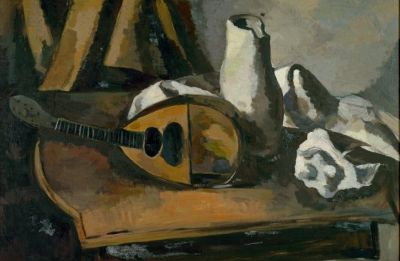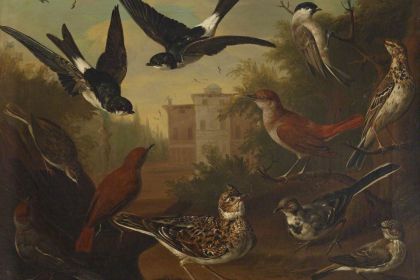MANDOLIN
Vivaldi's two mandolin concertos as the core of classical mandolin music

Still Life with Mandolin by Ernst Dreyfuss
Although the mandolin in its modern design can be traced from the second half of the Baroque period, its role in classical music is quite episodic, and the works written by famous composers for the instrument can be counted on one hand. Mandolin was never widely used in classical orchestras, remaining mainly a folk instrument that usually provided accompaniment in vocal music.
It is known that Beethoven liked to play on his Milanese mandolin as he wrote six short instrumental pieces for it, while Mozart chose the mandolin as an accompaniment for his famous aria Deh vieni alla finestra from the opera Don Giovanni. But the most famous classical pieces for the instrument are undoubtedly two mandolin concertos written by Vivaldi.
The Mandolin Concerto in C major was written by Vivaldi in 1725, the same year as his famous The Four Seasons. Presumably, the concert was composed to be performed by students of the Venetian music school Ospedale della Pietà where the composer held several positions at different times. As such, the mandolin part is technically not very complicated but well balanced and features developed melodic lines.
Listen to Allegro, the first movement of the Mandolin Concerto in C Major, RV 425 performed by Mark Stephenson with London Musici:
Written around 1736, Double Mandolin Concerto, for 2 mandolins, strings and continuo in G major was originally intended for the Marquise Bentivoglio de Ferrara, as shown in the letter in which the composer asks the patronizing aristocrat about his training in mandolin. In his reply, Bentivoglio complains that he very rarely picks up a mandolin in his hands, so most likely this work by Vivaldi was also intended for his students in Ospedale della Pietà.
Listen to Allegro, the first movement of the Concerto in G Major for 2 Mandolins, RV 532 performed by Claudio Scimone with I Solisti Veneti:
Both of Vivaldi's mandolin concertos are composed in the ternary form where the minor middle movement contrasts with the major main theme performed in the first movement, while the laconic ritornello of the third movement shows a varied repetition of the main theme. These structurally simple but melodically vibrant works quite deservedly play the main role in the repertoire of any mandolin orchestra.




One of them is used as opening music for the film Kramer VS Kramer